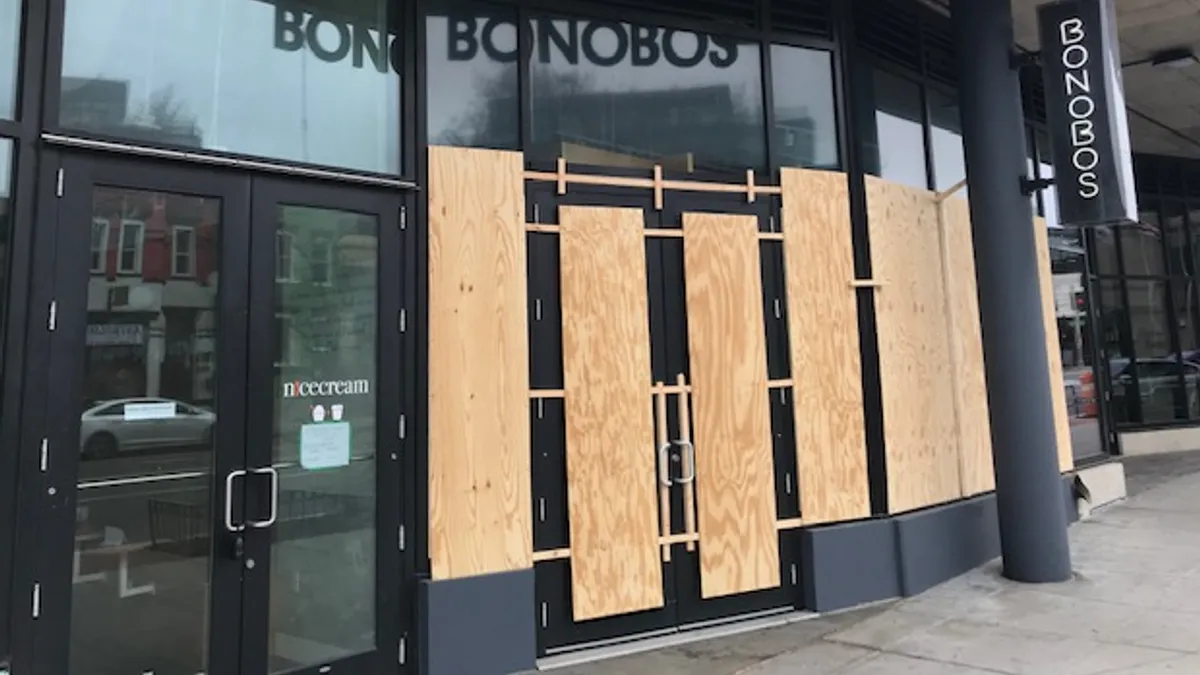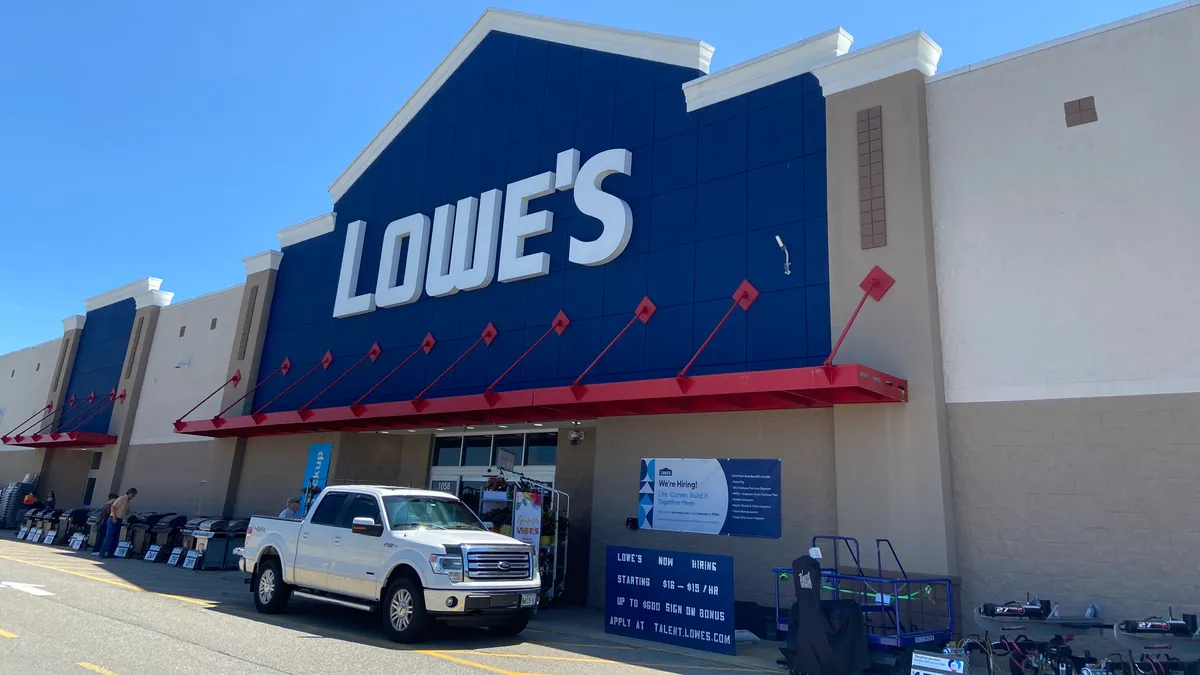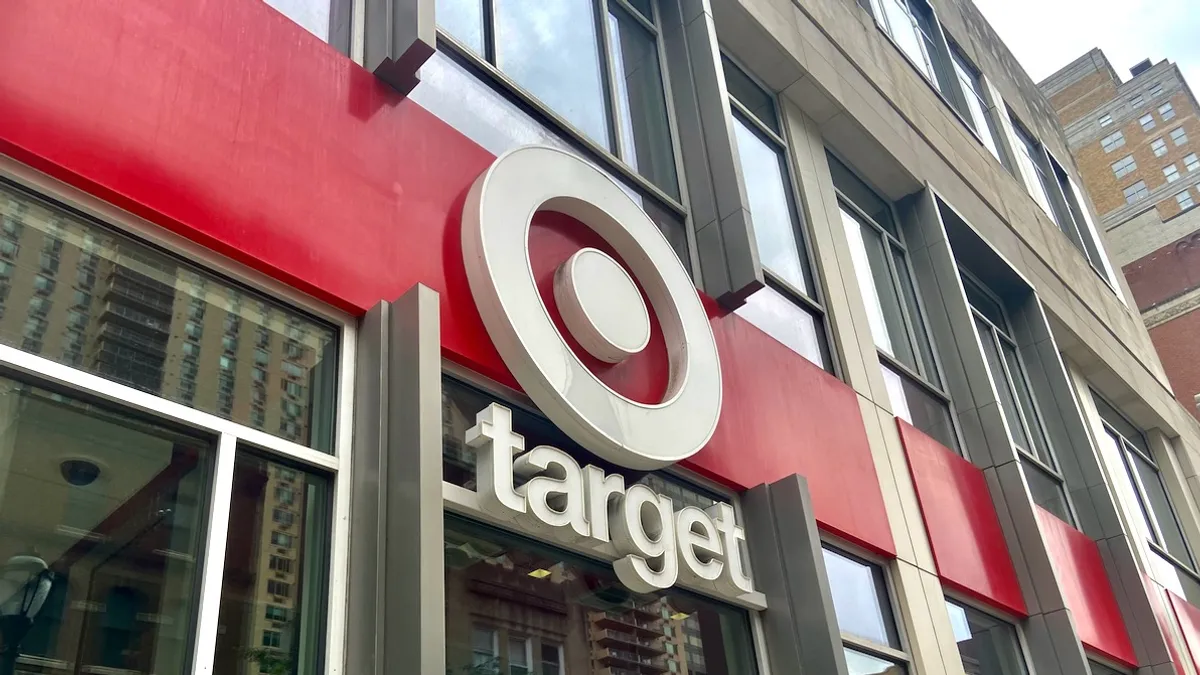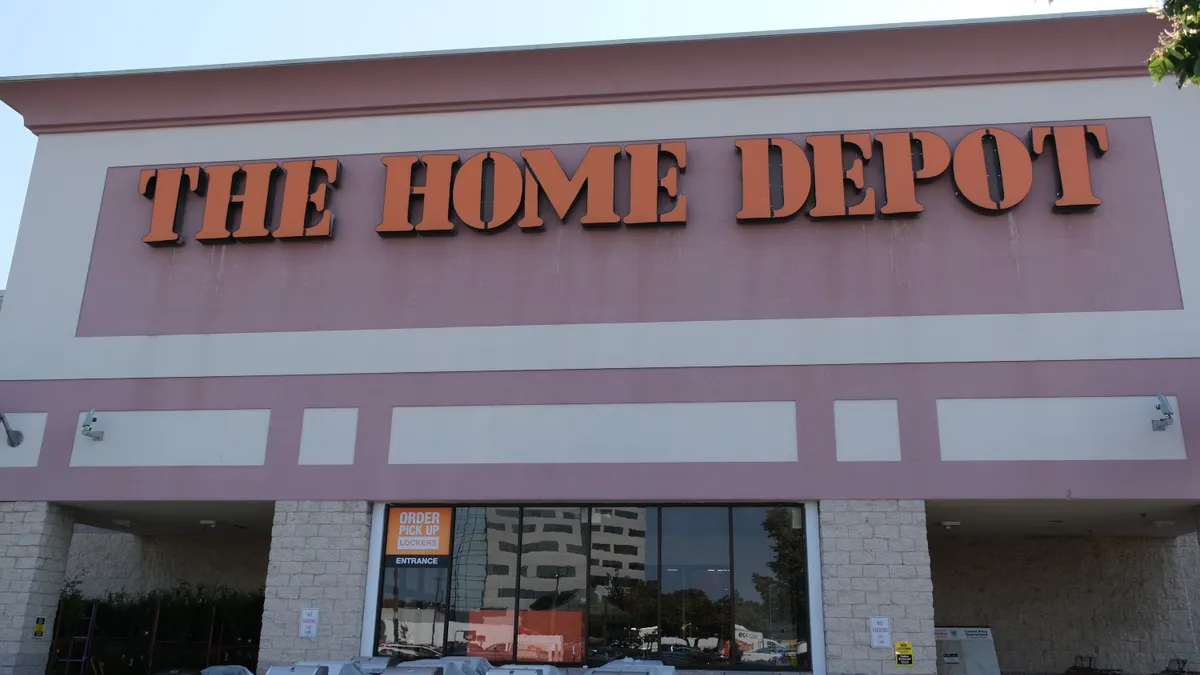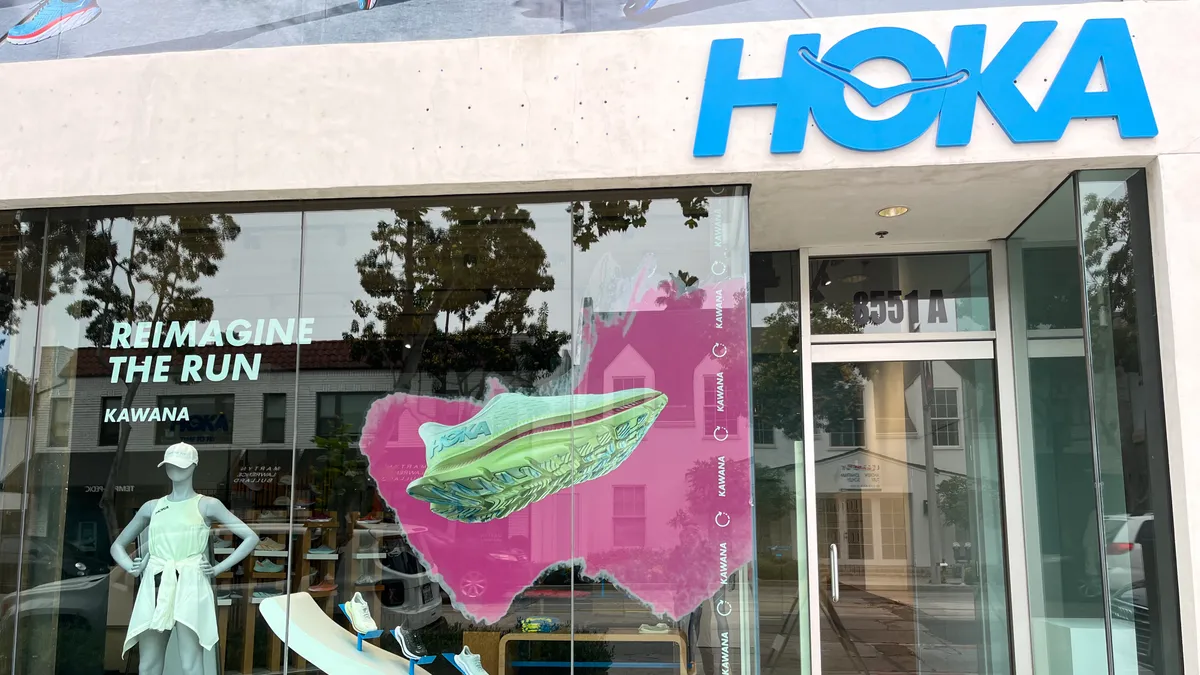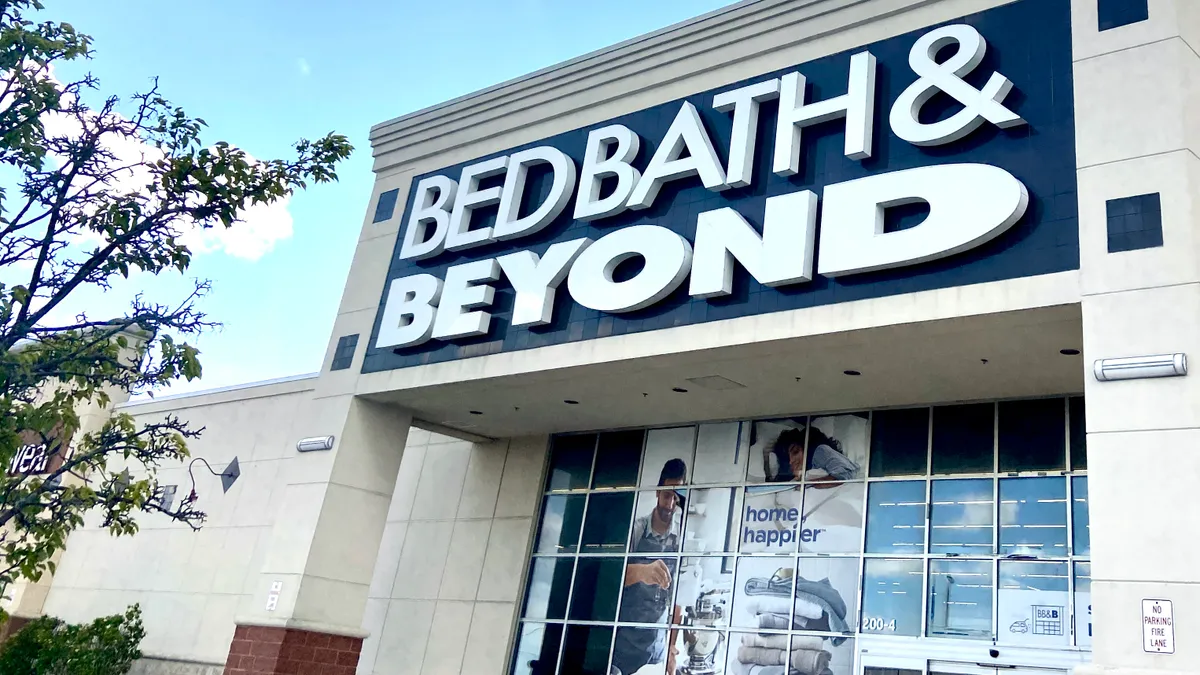It's 9 p.m. on 14th Street, NW, in Washington, D.C., and the streets are empty.
It's a part of the city that is typically bustling with shoppers, bar hoppers and locals running errands. But, like shopping areas across the country, almost all activity has temporarily halted due to COVID-19.
What was once raucous on a Saturday night is now silent. Adding to an eerie feeling of disconnect is a row of stores that are boarded up. West Elm's entire first floor has been covered with plywood. Sephora has been boarded up as well — the wood has been painted black, and notes have been left behind stating that the store is temporarily closed but the company is offering free online shipping with a code.
The J. Crew Men's Shop stands by itself. The wood on its windows now sports graffiti. There is a Bonobos store a few blocks away, around the corner on U Street that has also been boarded up. A scattering of smaller retailers in the neighborhood have also papered over the front entrances.
Boarded-up storefronts are a stark visual reminder of the pandemic. A single store closed off might be a bit odd, but a neighborhood visually closing adds to a supernatural feeling that is evoked as cities shut down and grapple with how to support businesses but still keep local populations safe.
Non-essential retailers have been announcing temporary closures since roughly mid-March, and then inch by inch extending the date of those messages. But, should companies physically board up their stores? Is it an unavoidable move to protect assets in a time of so much uncertainty, or a decision that may backfire in the long term, causing unnecessary harm to a brand?
When two weeks turned into more
While closing down a business may seem like a straightforward process, there are operational logistics to consider. "It's not just setting the alarm and walking out the back door. Especially since we don't know how long this is going to last," Matt Garfield, managing director with FTI Consulting, said in an interview with Retail Dive.
In part that means securing the store, talking with security, including local police departments, and ensuring parking lots are safe.
Mall-based stores conceivably have to follow fewer operational procedures because the larger building will have security protocols. But street-level stores have to independently decide how to respond to city and government ordinances to protect their property.
The decision to board up storefronts may have roots in security concerns. New York City recorded an uptick in burglaries coinciding with the beginning of the pandemic, according to a report by The Wall Street Journal. The New York Police Department saw a 75% increase in burglaries of commercial businesses from March 12 through March 31, compared to the same time the year prior, according to the report.
The potential longevity of the pandemic also plays a part in how retailers make decisions about their physical buildings. In the beginning days of COVID-19, companies largely anticipated being closed for two weeks. Then things took a turn as the number of confirmed COVID-19 cases doubled in less than a month and the public was encouraged to stay at home to "flatten the curve." What was once anticipated as a nationwide time-out soon became indefinite.
"That's a long time to just have an asset sitting," Bob Moraca, vice president of loss prevention at the National Retail Federation, said regarding the extension of temporary closures. "Think if you left your house, your apartment for that long. You [would] want to make sure it was secure … in many ways this is our home. We're a part of that same community."
Assets that are in play go beyond a retailer's physical building. As the pandemic goes on, experts have discussed if more retailers should go dark and, in effect, turn into distribution centers. Grocers in particular are seeing the impact of keeping stores open as safety concerns for both employees and shoppers mount. For other retailers, the products that are currently trapped in dark stores are items that ultimately can fill a company's e-commerce pipeline. CEO Chip Bergh said in an earnings call in early April that the company "aggressively cut purchases and canceled orders for the second half of 2020" in an attempt to keep inventory in check. While the company is reducing and canceling orders, it also stated that it will ship some e-commerce orders from shuttered stores.
Other companies are sending inventory back to distribution centers, according to multiple analysts. Shipping in-store items strategically to busy fulfillment centers means that products are both protected and available to satisfy online orders.
Moving inventory out of stores is an option that many luxury retailers are exercising, rather than shutting storefronts. That way the company's high-priced products are protected, but the brand's presence is maintained in a city.
Shinola, for instance, removed products from its D.C. store.
"We decided not to board up our storefronts, as to not give the somber impression that this is permanent," a Shinola spokesperson said in an emailed statement to Retail Dive. "Regarding product on the floor, part of our daily store procedures involves removing product from most displays before closing each night, then resetting product in the morning, so really no major change there. When it was determined that we'd be closing our doors during the pandemic, we had our store teams begin to ship stock back to our distribution center so we could divert product to our ecommerce business, where we're seeing a healthy demand."
Other retailers, though, aren't necessarily discussing the pandemic and its potential correlation with the decision to board up stores. In a conversation with Retail Dive, a spokesperson for Bonobos said that the retailer's D.C. store on U Street, NW, was the only location out of the retailer's over 60 Guideshops that was boarded up. The spokesperson said the decision to shutter the storefront was not COVID-19 related, but a measure that the company took because other retailers in the neighborhood were doing so.
J. Crew said that it decided to board up its Men's Shop location in Washington, D.C., "due to a burglary" that occurred the week of March 16. "We look forward to returning to our normal storefront in due course," a spokesperson from the company said in an email to Retail Dive.
Additionally, a spokesperson from Sephora said in an email to Retail Dive, "In accordance with our protocols for temporary store closures, we have standardized precautions to protect our properties across North America."
West Elm did not respond to inquiries regarding its boarded storefront in the same area.
A question of branding
One of the risks of boarding up a store is that it may impact a brand's image. As customers return to stores they may associate a previously blocked location as being an unsafe place to shop. "I'm going to think, 'Wow, they're so nervous about getting broken into and something happening. This is probably a bad area,'" Bruno Mota, co-founder and CEO of boutique consulting and risk management firm Pembroke & Co. "Some of those negative connotations that were built up may last, and that in itself is going to be a loss."
Mota said that his view of loss prevention isn't solely about halting in-store theft, but also encompasses preventing the loss of a shopper. "That's the loss that happened that you haven't even realized yet."
Boarding up stores may not have a branding impact over large swaths of the population, but it can still result in leaving consumers with an impression of the retailer, he said. "Ninety percent of people are going to think it's no big deal. But, when you're running on such low margins, losing one, two, or even three percent of clientele right now can be disastrous."
And while some retailers have had clear communication as to how and why they are physically shuttering their brick-and-mortar locations, others have had a murkier response on their decisions.
"In the absence of data and real information, people are driven to make up the most terrifying scenarios in their mind," said Deb Gabor, CEO and founder of Sol Marketing and author of "Irrational Loyalty: Building a Brand that Thrives in Turbulent Times."
Companies can take several steps to communicate with their customers, even if the way forward isn't completely clear. "This is like crisis communication 101, which is: Be precise. Be frequent. Show regard for humanity. Communicate in a clear manner and let people know what is going on. Be timely," Gabor stated, adding that if companies don't have immediate explanations, to "let people know when you expect you will have answers."
The labor of reopening
The reality of shuttered storefronts leaves both the industry and the public with many questions — the centermost being: When can non-essential stores reopen?
Resuming a semblance of "normal" retail practices will probably be a process, multiple experts noted. And those operations go beyond taking boards off of windows.
"It's not going to be like turning on a light switch," Moraca said. "It's going to be more of a dimmer switch."
That means coming back to perhaps new shopping practices, at least for a while. Moraca said that he's talked to retailers who are already expanding the point-of-sale area within stores so customers can stand further apart. He also said to expect the addition of hand sanitizer on counters and for associates to continue to wear personal protective equipment.
"I think there'll be an ease into the process," Moraca said. "As opposed to just, 'Okay everybody, it's game time — everybody go.'"
Correction: An earlier version of this story included a mention of Levi’s direct-to-consumer business. It has been removed to more accurately depict the company’s operations.



